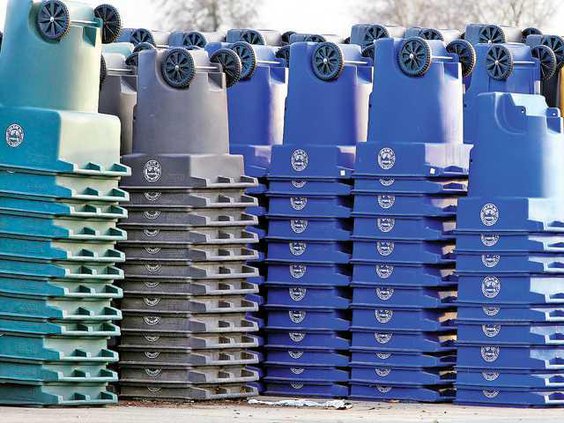A decision to move toward a system recycling food waste into fuel to power municipal refuse collection trucks is on pace to save Manteca ratepayers $230,000 in maintenance and fuel savings alone.
The Manteca council in September entered into a 10-year contract to send garbage to San Joaquin County’s Lovelace Transfer Station north of the city between Airport Way and Union Road instead of trucking it to the Austin Road landfill as the first move to establish a system to convert food waste into fuel. The state is mandating that food waste no longer be buried in landfills.
The move means trucks are traveling shorter distances and the wear and tear has been significantly reduced as they are no longer driving into the landfill to dump loads. It has resulted in a reduction in tire replacement and other maintenance issues that will save $30,000 a year.
The status report of savings was made during the same Manteca City Council meeting that elected officials authorized International Engineering Services to do an independent rate study for $70,000.
The last rate study for the solid waste enterprise was conducted in 2004. The last rate increase was in July 2007.
The city is projecting the reserves in the solid waste fund will fall to about 17 percent of the operating expenses for a year.
The conversion to food waste recycling was expected to possibly have some impact on rates in the short run with long-term cost avoidance expected. Bigger money issues include the fact the city like all other jurisdictions is under a mandate to reduce emissions from vehicles as San Joaquin Valley struggles to meet federal and state air quality mandates. The city has more than 20 trucks left in its fleet that need to be replaced with cleaner burning vehicles. A new refuse collection truck costs in excess of $300,000 each.
Manteca was the first city in the 209 to switch to cleaner burning trucks using hybrid technology that also can run on compressed natural gas.
Highlights of the solid waste project being overseen by Deputy Director of Public Works John Clymo include:
The decreased time to travel to the tipping site and dispose of the load has allowed for the elimination of two residential routes and an additional run to the transfer station in an eight-hour shift. The commercial routes have been reduced by one. Weight restriction violations and driver unproductive time have been reduced or eliminated. This has been accomplished in despite more than 100 new stops being added since Oct. 1, 2015 and more than 900 new stops since January 2014. Drop-box activity for the same period of time has almost doubled.
uAs a result of the elimination of one commercial route and two residential routes, the need to hire two additional staff has been delayed.
For the period October 2015 through January 2016, there has been a 6% reduction in fuel usage for the Solid Waste Division. Combined with unanticipated historically low fuel prices, there is a total reduction in fuel expenditures of 42% over the same four-month period last year. Staff anticipates total year-end fuel expenses will be 60% of budget, for an estimated savings of $200,000.
Staff has evaluated the costs for tires and rear door rams for the period October 2015 through February 2016 compared to the same period one year ago. In reviewing work repair orders, fleet reports repairing one rear door ram as compared to 13 repairs in the prior year for the same period of time. The reduction in expenditures including supplies and staff labor costs is estimated to be $30,000.
Trash savings on $230K pace
Manteca conducting rate study for first time since 2004





